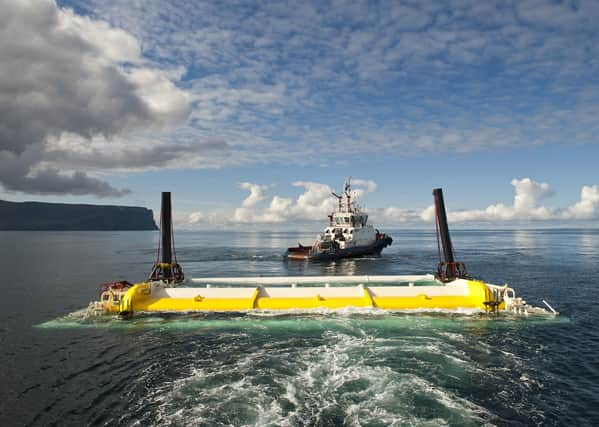Working hard to make sure our oceans are ‘blue’ as well as ‘green’– Joe Pacitti


This is not a commentary on trying to balance the football allegiances on our main west coast city in Scotland, but more a suggestion that we need to balance the economy and environment as we come out of the lockdown with a stronger focus on the sustainability of our planet.
There is often a suggested paradox between economic growth and sustainability – therefore the challenge is how to find a way to balance these two forces and to support them to co-exist.
Advertisement
Hide AdAdvertisement
Hide AdWe are all very aware of the ecological arguments and the “greening” issues that we face globally, but I suspect less of us have thought about the “blue” apart from plastics in the ocean – and of course this tends to be part of the green agenda.


I am also suggesting that as we look at the future. We need to consider what has been termed as blue economy (or growth), an area that has started to receive a little more attention for the last few years.
What is blue economy or blue growth?
“Blue economy” is marine-based economic development that that leads to positive impact to societal challenges and also reduces environmental risks.
Blue growth identifies the difference between many of the more mature activities in our marine economy such as offshore oil and gas where, for decades, Scotland has been a global pioneer, and areas of innovation such as blue-biotech, aquaculture, blue energy, marine tourism and marine mineral resources.
So, if we challenge ourselves with a balanced green and blue agenda, a twin approach (or should that be intertwined), as part of our route out of the Covid-19 position, we double our odds for success, we are after all a coastal and island economy.
All too often the drive for innovation focuses on shiny and new and becomes a stretch too far, a hurdle that means action is not taken. If we pivot this and approach innovation by mixing new technology and science and combine this with technology which has a tried and tested track record – but will be applied in a creative way.
We could start with a relatively low starting investment drawing from a mix of capabilities and use this combined approach as the scale up.
The addition of blue growth to our green agenda is one way to develop this idea.
Advertisement
Hide AdAdvertisement
Hide AdWhat might such an initiative look like utilising some of the existing and unique ingredients of; place, expertise, talent and connectivity to all of the stakeholders of business government and community?
Scotland already has a global lead in the field of renewable energy. EMEC in Orkney has become the world leading destination for RD and D in wave and tidal energy. There are several other leading companies dealing with offshore energy technology and innovation.
There are many other examples and themes of the blue economy that we can draw upon to suggest that this an area that we need to seize and exploit now.
With such a starting position – having a range of themes and players involved from the start - you can see how the key ingredients to get going and do something could be relatively easy.
Lack of easy and quick pump priming of initiatives are generally not the reason they fail – it is often a lack of scale and the lack of cohesive community and direction from the key stakeholders that is the issue.
So, in this case it has all (or at least nearly all) of the key ingredients in place – it is waiting for the pump priming to make something happen.
There are many academic institutions in Scotland which are already involved in multi-disciplinary research and we should increase and build on this. This can be exactly the same for our industry base, encourage more partnering and reshoring and co-development and innovation. We can still collaborate internationally increasing our interconnectivity across our industry and academic base is surely a prize that Scotland must embrace to sustain and grow its position as a centre for innovation. Furthermore, the opportunity that this will bring will demonstrate the resolution of the paradox of a green and blue growth initiative – one which does balance sustained economic growth with a positive environmental benefit.
Joe Pacitti, managing director, Centre for Enginering, Education and Development (CeeD)
Comments
Want to join the conversation? Please or to comment on this article.